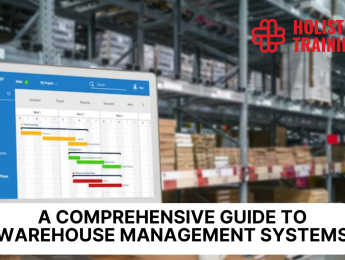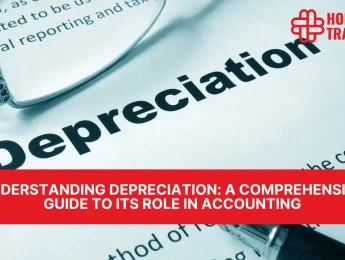- Table of Contents
- Introduction
- What Is Portfolio Management?
- A Holistic View
- Prioritisation and Alignment
- Resource Allocation
- Risk Management
- Continuous Improvement
- Adaptability and Flexibility
- Why Do Companies Use Portfolio Management?
- Optimised Resource Utilisation
- Risk Mitigation
- Strategic Alignment
- Improved Decision-Making
- Resource Allocation
- Competitive Advantage
- Long-Term Sustainability
- Enhanced Stakeholder Confidence
- Adaptability to Change
- Key Strategies for Effective Portfolio Management
- What Is Project Management?
- The Phases of Project Management
- Key Aspects of Project Management
- How Do Program and Portfolio Management Relate to Project Management?
- Key Strategies for Effective Project Management
- What Is Program Management?
- The Role of Program Management
- Key Elements of Program Management
- Why Is Program Management Important?
- Key Strategies for Effective Program Management
- Key Differences Between Program, Project, and Portfolio Management
- How to Successfully Manage Projects and Portfolios
- Successful Project Management
- Effective Portfolio Management
- Efficient Program Management
- How to Know Which One You Need for Your Organisation
- 1. Organisational Goals
- 2. Multiple Related Projects
- 3. Resource Allocation
- 4. Risk Management
- 5. Strategic Alignment
- Agile and the Evolution of Project, Program, and Portfolio Management
- Agile Project Management
- Agile Program Management
- Agile Portfolio Management
- Artificial Intelligence and the Future of Portfolio Management
- AI-Powered Portfolio Optimisation
- AI-Enhanced Decision Support
- Automation and Streamlining
- In Conclusion
Introduction
In today's rapidly evolving business landscape, effective management of resources, strategies, and initiatives has never been more critical. To navigate this complex terrain, organisations rely on three pivotal pillars: Portfolio Management, Project Management, and Program Management. These distinct yet interconnected disciplines play a vital role in achieving business objectives, ensuring efficiency, and driving innovation. In this comprehensive guide, we will explore the essence of each, their significance, their relationship to one another, and how to determine which is the right fit for your organisation.
What Is Portfolio Management?
Portfolio Management is akin to the conductor of a symphony, orchestrating a harmonious blend of projects and programs within an organisation to create a masterpiece of strategic success. It goes beyond merely overseeing individual projects; it's about having a comprehensive vision that aligns every initiative with the organisation's overarching goals and values.
A Holistic View
At its core, Portfolio Management is about taking a holistic view of all the projects, programs, and initiatives within an organisation. Imagine you are an investor with a diverse stock portfolio. Each stock represents a different project or program, and your goal is to ensure that your portfolio grows in value over time. To achieve this, you must carefully select which stocks (projects) to invest in, allocate resources efficiently, and manage risks effectively. This is precisely what Portfolio Management does for an organisation's projects and programs.
Prioritisation and Alignment
One of the central tenets of Portfolio Management is prioritisation. Not all projects are created equal, and not all are equally important to the organisation's success. Portfolio managers must evaluate each potential project based on its alignment with the company's strategic goals, potential return on investment (ROI), and risk factors. This process involves weighing the potential benefits against the associated costs and risks, ensuring that the chosen projects contribute meaningfully to the organisation's strategic objectives.
Resource Allocation
Resource allocation is another critical facet of Portfolio Management. An organisation has limited resources, whether they are financial, human, or time-related. Portfolio managers must allocate these resources judiciously to maximise their impact. This means making tough decisions about which projects to greenlight, how much funding each project should receive, and how to allocate the available talent and time effectively.
Risk Management
In the world of project and program management, risk is an ever-present companion. Portfolio Management takes a macroscopic view of risk by assessing and managing it across the entire portfolio. By identifying potential risks at this level, organisations can proactively develop strategies to mitigate them. This proactive risk management approach helps prevent potential pitfalls that could derail individual projects or programs.
Continuous Improvement
Portfolio Management is not a one-and-done process. It's an ongoing, iterative practice. Organisations must continuously monitor the health and progress of their portfolio of projects and programs. This involves measuring key performance indicators (KPIs), assessing whether projects are on track to meet their objectives, and making adjustments as needed. It also includes periodic reviews to ensure that the portfolio remains aligned with the organisation's evolving strategic priorities.
Adaptability and Flexibility
In today's fast-paced business environment, adaptability and flexibility are crucial. Portfolio Management must be agile enough to respond to changing circumstances, market dynamics, and emerging opportunities or threats. This adaptability allows organisations to shift resources and priorities swiftly, ensuring they remain competitive and responsive in a rapidly evolving landscape.
In essence, Portfolio Management is the art of juggling multiple balls in the air while keeping your eyes on the prize—the organisation's strategic goals. It's about making informed decisions, optimising resource allocation, mitigating risks, and ultimately delivering a portfolio of projects and programs that drive the organisation toward long-term success. By mastering the principles and practices of Portfolio Management, organisations can achieve a harmonious symphony of strategic achievements.
Why Do Companies Use Portfolio Management?
Efficient Portfolio Management offers numerous advantages:
Optimised Resource Utilisation
In the business world, resources are often scarce and expensive, whether they are financial, human, or time-related. Portfolio Management ensures that these resources are allocated efficiently and strategically across the organisation's projects and programs. By doing so, companies maximise the return on their investments, avoid resource bottlenecks, and minimise waste. In essence, it allows companies to do more with less.
Risk Mitigation
Every project or program carries inherent risks, whether they be related to technology, market conditions, regulatory changes, or other factors. Portfolio Management takes a holistic view of these risks, identifying potential threats that could affect multiple projects or the organisation as a whole. By proactively addressing these risks at the portfolio level, companies can develop strategies to mitigate them, reducing the likelihood of costly setbacks and project failures.
Strategic Alignment
One of the primary reasons companies use Portfolio Management is to ensure that all their initiatives are aligned with their strategic objectives. In a rapidly changing business environment, it's easy for projects to become disconnected from the overarching strategy. Portfolio Management provides a framework for evaluating projects and selecting those that best contribute to the organisation's long-term goals. It acts as a strategic compass, keeping the company on the right course.
Improved Decision-Making
Effective decision-making is at the heart of business success. Portfolio Management equips executives and leaders with a clear overview of all ongoing initiatives. This transparency enables them to make informed decisions about which projects to prioritise, how to allocate resources, and when to adjust course based on changing circumstances. It removes the guesswork and subjectivity from decision-making processes.
Resource Allocation
Companies often have competing projects vying for limited resources. Without Portfolio Management, resource allocation decisions can become haphazard, leading to inefficiencies and conflicts. With Portfolio Management, organisations can make data-driven decisions about which projects to fund and to what extent. This ensures that resources are directed toward projects that offer the greatest strategic value.
Competitive Advantage
In today's hyper-competitive business landscape, staying ahead of the competition is paramount. Portfolio Management helps companies identify and prioritise projects that can give them a competitive edge. By focusing resources on innovative and strategic initiatives, organisations can differentiate themselves in the market, seize opportunities, and respond effectively to industry disruptions.
Long-Term Sustainability
Companies that adopt Portfolio Management are often better positioned for long-term sustainability. By aligning all initiatives with their strategic vision and actively managing risks, they reduce the likelihood of sudden and catastrophic failures that could threaten their existence. Portfolio Management fosters a proactive, forward-thinking mindset that enables organisations to thrive in the face of uncertainty.
Enhanced Stakeholder Confidence
Stakeholders, including investors, customers, and employees, want to see that a company is making strategic and responsible decisions. Portfolio Management provides a structured approach to project selection and management, instilling confidence that the organisation is committed to achieving its strategic objectives. This, in turn, can attract investment, retain customers, and motivate employees.
Adaptability to Change
In a dynamic business environment, change is inevitable. Portfolio Management equips companies with the tools and processes to adapt to change effectively. Whether it's pivoting to respond to market shifts, capitalising on emerging trends, or addressing unexpected challenges, Portfolio Management ensures that organisations can navigate change while staying focused on their strategic goals.
In short, companies use Portfolio Management as a strategic imperative to optimise resource utilisation, manage risks, align initiatives with strategic goals, make informed decisions, gain a competitive advantage, ensure long-term sustainability, enhance stakeholder confidence, and remain adaptable in a constantly evolving business landscape. It serves as a compass that guides organisations on their journey to success, helping them achieve their strategic objectives efficiently and effectively.
Key Strategies for Effective Portfolio Management
Let's take a closer look at some key strategies that can make your Portfolio Management endeavours a success:
What Is Project Management?
Project Management is both an art and a science, dedicated to ensuring that projects are executed efficiently and effectively to achieve their objectives. Whether it's developing a new product, organising an event, building infrastructure, or implementing a new software system, Project Management provides the structured approach needed to deliver successful outcomes.
The Phases of Project Management
Project Management typically involves several distinct phases:
- Initiation: This is the starting point, where the project's goals and objectives are defined. Key stakeholders are identified, and the project manager is often appointed at this stage.
- Planning:Once the project is initiated, it's time to create a detailed project plan. This plan outlines tasks, timelines, resources, and budgets. It also identifies potential risks and mitigation strategies.
- Execution:This phase involves the actual implementation of the project plan. Project teams work to complete tasks, coordinate resources, and ensure that the project stays on track.
- Monitoring and Controlling: Project managers continuously monitor progress, comparing it to the project plan. They identify and address any deviations from the plan, ensuring that the project remains on course.
- Closing:Once all project objectives are met, the project is closed out. This phase includes tasks like finalising deliverables, obtaining client or stakeholder acceptance, and releasing project resources.
Key Aspects of Project Management
Several key aspects define the discipline of Project Management:
- Scope Management:Defining the project's scope is crucial to ensure that everyone involved understands what the project will and will not include. Managing scope changes is equally important to prevent "scope creep," which can lead to project delays and budget overruns.
- Time Management:Effective time management is essential to ensure that projects stay on schedule. Project managers create timelines, set milestones, and track progress to meet deadlines.
- Resource Management: Managing resources, including people, equipment, and materials, is vital for project success. Project managers allocate resources based on the project's needs and monitor resource usage throughout the project's lifecycle.
- Quality Management:Ensuring that project deliverables meet or exceed quality standards is a critical aspect of Project Management. Quality control measures are put in place to verify that project outputs meet the specified criteria.
- Risk Management:Identifying and mitigating risks is an ongoing process in Project Management. Project managers assess potential risks, develop risk mitigation strategies, and monitor risks throughout the project to minimise their impact.
How Do Program and Portfolio Management Relate to Project Management?
Project Management, Program Management, and Portfolio Management form a hierarchy of management practices within an organisation.
- Project Management is focused on the execution of individual projects. It deals with the day-to-day tasks, timelines, resources, and deliverables needed to complete a specific project successfully.
- Program Management sits above Project Management and involves the coordination of multiple related projects that contribute to a common strategic goal. Program managers oversee the interdependencies between projects and ensure that they align with the program's objectives.
- Portfolio Management is the highest level and encompasses the management of all projects, programs, and initiatives within an organisation. It provides strategic oversight, ensuring that the projects and programs in the portfolio align with the company's long-term goals and are prioritised appropriately.
In essence, Project Management is the "execution arm" of the organisation, while Program Management and Portfolio Management provide the strategic and organisational frameworks that guide the execution of projects and programs.
Key Strategies for Effective Project Management
To ensure successful project execution, consider the following strategies:
Strategy | Description |
Clear Project Objectives | Define clear, specific, and measurable project objectives from the outset. |
Stakeholder Communication | Establish open lines of communication with all project stakeholders. |
Change Management | Develop strategies for managing changes that may arise during the project. |
Project Documentation | Maintain comprehensive project documentation to track progress and facilitate knowledge transfer. |
Continuous Improvement | Implement lessons learned from previous projects to refine future processes. |
What Is Program Management?
Program Management is the art of orchestrating and overseeing multiple related projects as a cohesive unit to achieve broader strategic objectives. Think of it as the conductor of a symphony, ensuring that every instrument (project) plays its part harmoniously to create a beautiful composition (strategic success).
The Role of Program Management
Program Managers are responsible for coordinating a group of related projects, also known as a program, that collectively contribute to a shared strategic goal. Unlike Project Managers who focus on individual projects, Program Managers take a holistic view, looking at the interdependencies and interactions between projects within the program.
Key Elements of Program Management
Several key elements define the practice of Program Management:
- Alignment with Strategy: A fundamental aspect of Program Management is ensuring that all projects within the program align with the organisation's strategic goals and objectives. The program should be a means to execute the organisation's strategy effectively.
- Interdependencies: Many projects within a program are interconnected. Program Managers identify and manage these interdependencies to prevent conflicts, bottlenecks, and resource shortages. This ensures that the projects work together seamlessly to achieve the overarching goal.
- Resource Allocation: Program Managers are responsible for optimising resource allocation across multiple projects within the program. This includes human resources, financial resources, and other assets. Effective resource management ensures that projects receive the support they need to succeed.
- Risk Management:Similar to Project Management, Program Management involves risk management. However, Program Managers assess and manage risks at the programme level, considering how risks may affect multiple projects. This proactive approach minimises the potential impact of risks on the program's success.
Why Is Program Management Important?
Program Management offers several critical benefits to organisations:
- Synergy: By coordinating related projects under a common strategic goal, Program Management enables the achievement of synergies that individual projects might not attain on their own. Projects within a program can leverage each other's strengths and resources to achieve more significant outcomes.
- Risk Reduction: Programs often involve complex interdependencies. Program Management identifies and manages these dependencies, reducing the likelihood of conflicts or project delays. Additionally, by assessing risks at the program level, organisations can address potential issues before they impact individual projects.
- Efficiency: Program Management optimises resource allocation across multiple projects, minimising resource duplication and waste. This results in a more efficient use of resources and often reduces costs.
- Strategic Alignment:Programs are designed to align with the organisation's long-term strategic objectives. By ensuring that all projects within a program contribute to these objectives, Program Management keeps the organisation focused on its overarching strategy.
- Better Decision-Making: Program Managers provide senior leadership with a comprehensive view of the programme's status and progress. This enables executives to make informed decisions about resource allocation, priority adjustments, and strategy refinements.
Key Strategies for Effective Program Management
Here are some strategies to excel in Program Management:
Strategy | Description |
Clear Program Objectives | Establish clear, well-defined program objectives aligned with the organisation's strategic goals. |
Robust Governance Structure | Implement a governance structure that provides oversight and decision-making authority. |
Stakeholder Engagement | Engage stakeholders to ensure their support and alignment with program objectives. |
Dependency Management | Identify and manage dependencies between projects within the program. |
Benefits Realisation | Define and track key performance indicators (KPIs) to measure the program's success. |
Key Differences Between Program, Project, and Portfolio Management
It's crucial to understand the distinctions between these management disciplines to determine which is right for your organisation:
Aspect | Portfolio Management | Program Management | Project Management |
Focus | Strategic alignment of all projects | Coordination of related projects | Execution of individual projects |
Scope | Entire project portfolio | A specific program | A single project |
Resource Allocation | At the portfolio level | Across multiple projects | For a single project |
Time Horizon | Long-term | Medium-term | Short-term |
Decision Authority | High-level executives | Program managers | Project managers |
Risk Management | Portfolio-wide risk assessment | Program-level risk management | Project-specific risk management |
Performance Measurement | Portfolio-level KPIs | Program-level KPIs | Project-specific KPIs |
Typical Outcome | Achieving strategic goals | Realising program objectives | Completing project deliverables |
How to Successfully Manage Projects and Portfolios
Now that we've explored the three pillars of management let's discuss how to excel in these domains.
Successful Project Management
Effective Leadership
Effective Project Management begins with strong leadership. A skilled project manager serves as the captain of the project ship, guiding the team toward the successful completion of project objectives. This leadership involves setting a clear vision, motivating team members, and providing direction when challenges arise.
Communication
Open and transparent communication is the lifeblood of successful Project Management. Project managers must establish and maintain effective channels of communication with all project stakeholders. This includes team members, clients, executives, and any other parties with a vested interest in the project's outcome. Regular updates, status reports, and clear documentation help ensure that everyone is informed and aligned with project goals and progress.
Risk Management
Project managers should adopt a proactive approach to risk management. This involves identifying potential risks, assessing their impact and likelihood, and developing strategies to mitigate or respond to them. Regular risk assessments and risk registers are essential tools in managing uncertainties and preventing them from derailing the project.
Effective Portfolio Management
Prioritisation
Prioritisation is a cornerstone of successful Portfolio Management. Organisations must establish a robust framework for evaluating and ranking projects based on their alignment with strategic goals and potential return on investment (ROI). This prioritisation process ensures that resources are directed toward projects that offer the most significant strategic value.
Resource Optimisation
Resource allocation is a dynamic process that requires continuous monitoring and adjustment. Effective Portfolio Management means optimising resource allocation to maximise returns while avoidingresource bottlenecks or overallocation. Organisations should have mechanisms in place to reallocate resources as needed to address changing priorities or project needs.
Risk Assessment and Mitigation
Similar to Project Management, Portfolio Management involves risk assessment and mitigation, albeit at a higher level. Portfolio managers identify potential risks that could impact the entire project portfolio. By assessing these risks and developing proactive strategies to mitigate them, organisations can safeguard their strategic investments and minimise portfolio-level threats.
Performance Measurement
Implementing key performance indicators (KPIs) and metrics is essential for evaluating the progress and success of projects within the portfolio. These metrics should align with the organisation's strategic objectives and provide a clear picture of how well individual projects are performing. Regular performance reviews help identify areas for improvement and ensure that projects remain on track.
Regular Review and Updates
Portfolio Management is not a static process. Organisations should conduct regular reviews of the portfolio to assess its alignment with changing business priorities. This involves evaluating the ongoing relevance and strategic value of each project within the portfolio. Projects that no longer contribute to the organisation's strategic goals may need to be deprioritised or discontinued, freeing up resources for more strategic initiatives.
Efficient Program Management
Strategic Alignment
The success of Program Management begins with clear program objectives that align with the organisation's strategic goals. These objectives serve as the North Star, guiding all related projects within the program toward a common purpose. Strategic alignment ensures that the program contributes meaningfully to the organisation's long-term success.
Dependency Management
Interdependencies between projects within a program are common. Program Managers play a crucial role in identifying and managing these dependencies to prevent conflicts and bottlenecks. Effective dependency management ensures that projects within the program work harmoniously and that none are impeded by delays or resource shortages caused by others.
Stakeholder Engagement
Stakeholder engagement is vital to maintain support and alignment with program objectives. Program Managers should actively involve key stakeholders and communicate regularly to ensure that everyone understands the program's progress and importance. Engaged stakeholders are more likely to provide support, resources, and the necessary backing to overcome challenges.
Benefits Realisation
Successful Program Management involves defining and trackingkey performance indicators (KPIs) that measure the program's success. These KPIs should be closely tied to the program's objectives and should provide a clear picture of progress and outcomes. Benefits realisation ensures that the program delivers tangible value to the organisation.
In summary, successful management of projects and portfolios requires a combination of effective leadership, clear communication, proactive risk management, strategic alignment, resource optimisation, and continuous performance measurement. By implementing these strategies, organisations can navigate the complexities of project and portfolio management with confidence, achieving their strategic goals efficiently and effectively.
How to Know Which One You Need for Your Organisation
Determining the appropriate management approach for your organisation requires a careful evaluation of your goals, resources, and existing structures. Each management level serves a specific purpose, and the choice should align with your organisation's strategic objectives and the nature of your initiatives. Here's how you can determine which one suits your organisation:
1. Organisational Goals
Start by aligning your choice with your organisation's overarching goals and strategic vision. Consider whether your primary concern is achieving specific project deliverables, coordinating related projects, or ensuring that your project portfolio aligns with long-term strategic objectives.
- Project Management: If your primary focus is on executing individual projects that have well-defined objectives and timelines, Project Management is appropriate. This is suitable when you have a single project or a set of unrelated projects.
- Program Management: When your organisation aims to achieve a broader, strategic objective by coordinating multiple interrelated projects, Program Management is the right choice. It provides the structure needed to manage dependencies and align projects with a common goal.
- Portfolio Management:If your primary concern is ensuring that your organisation invests in the right mix of projects and initiatives that align with long-term strategic goals, Portfolio Management is the answer. It allows you to evaluate, prioritise, and manage projects at a strategic level.
2. Multiple Related Projects
Consider the nature of your initiatives. Are they standalone projects, or are they part of a broader strategic initiative that involves multiple interdependent projects?
- Project Management:Choose Project Management when you have standalone projects with distinct objectives that don't significantly affect one another.
- Program Management: Opt for Program Management when you have a group of related projects that collectively contribute to a larger strategic goal. This is suitable when projects have dependencies or when their outcomes need to be integrated.
- Portfolio Management: Use Portfolio Management when you need to manage a mix of projects and programs across the organisation. It's ideal for optimising resource allocation and ensuring alignment with strategic objectives.
3. Resource Allocation
Consider how you allocate and manage resources within your organisation. Each management level has its approach to resource allocation.
- Project Management: Resources are typically allocated to individual projects. Project Managers are responsible for ensuring that their projects have the necessary resources to meet their specific objectives.
- Program Management:Program Managers allocate resources across multiple related projects within a program. This approach ensures that resources are used efficiently to achieve the program's strategic goal.
- Portfolio Management:Portfolio Managers oversee resource allocation at a higher level, ensuring that resources are distributed strategically across all projects and programs to maximise returns and align with organisational goals.
4. Risk Management
Evaluate your organisation's approach to risk management. Different management levels address risk differently.
- Project Management: Project Managers primarily focus on project-specific risk management, identifying and mitigating risks that affect individual projects.
- Program Management: Program Managers assess and manage risks that span multiple projects within the program. They coordinate risk responses and ensure that risks are addressed at the program level.
- Portfolio Management: Portfolio Managers take a macroscopic view of risk by assessing and mitigating risks at the portfolio level. They identify potential risks that could impact the entire project portfolio and develop strategies to mitigate them.
5. Strategic Alignment
Consider the degree of alignment between your initiatives and your organisation's long-term strategy.
- Project Management: Project Managers focus on executing tasks and delivering project outcomes. The direct link to the organisation's strategic goals may be less evident at this level.
- Program Management:Program Managers ensure that the projects within a program collectively contribute to a strategic objective, maintaining a high level of alignment with the organisation's strategy.
- Portfolio Management: Portfolio Managers have a holistic view of how projects and programs align with the organisation's strategic goals. They prioritise initiatives based on their strategic importance.
In short, the choice between Project Management, Program Management, and Portfolio Management hinges on your organisation's objectives, the nature of your initiatives, your resource allocation approach, your risk management practices, and the level of strategic alignment required. By carefully assessing these factors, you can determine which management approach best suits your organisation's needs and ensures the successful execution of your projects and initiatives.
Agile and the Evolution of Project, Program, and Portfolio Management
In recent years, the world of project management has seen a significant transformation with the widespread adoption of Agile methodologies. Originally developed for software development, Agile has since expanded its reach into various industries and management levels, including Project, Program, and Portfolio Management.
Agile Project Management
Agile Project Management focuses on flexibility, collaboration, and adaptability. Instead of following a rigid plan, Agile projects use iterative and incremental approaches. Teams work closely with stakeholders, frequently deliver small increments of value, and adapt to changing requirements.
This approach is particularly beneficial for projects that involve rapidly changing markets or technologies. Agile Project Management allows organisations to respond to customer feedback, pivot quickly, and continuously improve their products and services.
Agile Program Management
Program Management has also embraced Agile practices. Agile Program Management aims to coordinate and oversee a collection of Agile projects within a program. It emphasises communication, collaboration, and the alignment of Agile principles with strategic objectives.
In an Agile program, Program Managers work closely with Agile Project Managers and Scrum Masters to ensure that the program's goals remain in sync with the organisation's strategy. They facilitate cross-project collaboration and help manage dependencies in a dynamic environment.
Agile Portfolio Management
Even Portfolio Management has not been left untouched by the Agile revolution. Agile Portfolio Management seeks to align the organisation's project portfolio with its strategic goals while embracing Agile principles.
Agile Portfolio Managers continuously assess and reprioritise projects and programs, responding to changing market conditions and organisational needs. They use Lean and Agile practices to optimise resource allocation, ensure transparency, and maximise the delivery of value to stakeholders.
The Agile approach has brought increased adaptability, responsiveness, and customer-centricity to the management of projects, programs, and portfolios. Organisations that adopt Agile practices can navigate the complexities of the modern business landscape more effectively.
Artificial Intelligence and the Future of Portfolio Management
As technology advances at an unprecedented pace, artificial intelligence (AI) is becoming a transformative force in the field of Portfolio Management. AI-driven tools and algorithms are revolutionising how organisations select, prioritise, and manage their project portfolios.
AI-Powered Portfolio Optimisation
AI algorithms can analyse vast amounts of data to identify patterns, trends, and correlations that humans might miss. In the context of Portfolio Management, AI can assist in optimising project portfolios by:
- Risk Prediction: AI can assess historical project data and external factors to predict project risks. This proactive risk management can prevent costly setbacks.
- Resource Allocation:AI-driven tools can recommend optimal resource allocation strategies based on project priorities and resource availability. This ensures that resources are used efficiently.
- Project Selection:AI algorithms can evaluate potential projects by analysing their alignment with strategic goals, potential ROI, and risk factors. This data-driven approach helps organisations make informed project selection decisions.
AI-Enhanced Decision Support
AI is also enhancing decision-making in Portfolio Management. AI-powered decision support systems provide Portfolio Managers with real-time insights, predictive analytics, and scenario modelling capabilities. This allows for more agile and data-driven decision-making processes.
Automation and Streamlining
AI-driven automation can streamline routine Portfolio Management tasks, such as data collection, reporting, and performance monitoring. This automation reduces administrative overhead, allowing Portfolio Managers to focus on strategic activities.
While AI holds great promise in Portfolio Management, it's important to strike a balance between automation and human judgement. The best results often come from combining AI's data analysis capabilities with human expertise to make well-informed decisions and maximise the value of project portfolios.
As we look to the future, it's clear that AI will continue to play a pivotal role in Portfolio Management, helping organisations navigate an increasingly complex and data-rich business environment.
In Conclusion
To navigate the complex world of business initiatives successfully, organisations must master the art of Portfolio Management, Program Management, and Project Management. By understanding their differences, adopting best practices, and aligning each with specific organisational needs, you can maximise the efficiency of your projects, programs, and portfolios, ultimately achieving your strategic goals.
And, if you're eager to delve deeper into the world of Portfolio Management and want to harness the power of AI and Agile methodologies, don't miss our transformative course, ‘Portfolio & Asset Management,’ where you'll master the latest strategies and technologies to supercharge your organisation's success. Enrol now to unlock the keys to strategic excellence!

























